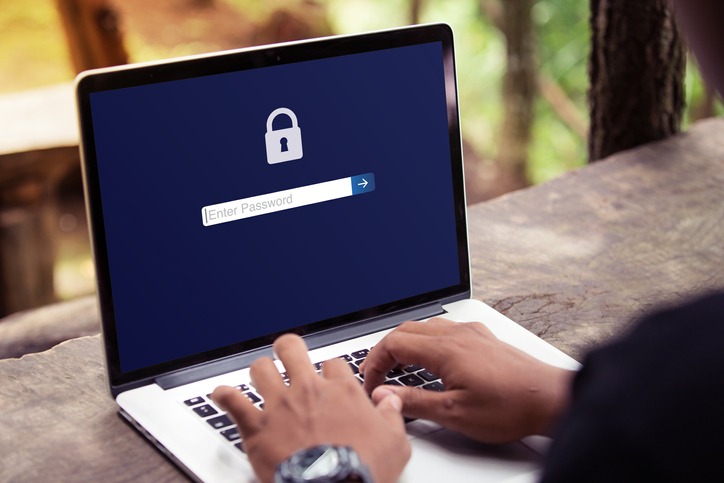Hot off the “press,” as they used to say, published by Kiplinger online May 16, 23. Written by Marguerita M. Cheng, this is a good article about our digital life and some tips on how to set up a digital estate plan. This is good information for anyone with online accounts. We don’t know what the future holds, and if something happens to you, such as being in a car accident, your loved ones might need to access your accounts. (Note: The State of Ohio is one of the states that has adopted the RUFADDAA (Revised Uniform Fiduciary Access to Digital Assets Act).
“Your digital life includes dozens of usernames and passwords. Providing a digital estate plan can help your family deal with your accounts with minimal fuss.
Today, much of our lives are digital, and many things we hold dear are not physical. But what happens to our digital assets when we die? That’s where digital estate planning comes in.
State laws such as the RUFADDAA (Revised Uniform Fiduciary Access to Digital Assets Act) offer the executor of an estate or attorney access to a person’s online accounts after incapacitation or death. These laws help you to protect your digital assets. But you need a digital estate plan to enable your family to access your digital assets if you pass away.
Several states have adopted RUFADAA, which has a three-tier process for accessing digital assets:
Tier one. Some digital service providers offer a tool to designate what happens to all your assets after you die. For instance, if you used Yahoo’s inactive account manager to designate a friend, that designation should guide what happens to your digital assets.
Tier two. If there is no such tool, the owners’ legal documents should dictate what should be done with the asset.
Tier three. If the above two scenarios do not help, then the service provider’s terms of service should dictate how the executor can access those accounts.
What is a digital estate?
Before making a digital estate plan, you need to understand what makes up your digital estate. Your digital estate includes all of your electronic and virtual accounts and assets, such as:
- Social media accounts.
- Email accounts.
- E-commerce accounts.
- Photos are saved in the cloud.
- Cryptocurrency keys.
- Cellphone apps.
- Domain names.
- Text, graphic, and audio files (or other intellectual property).
- Blogs and domains.
- Loyalty program benefits, such as credit card perks.
- Utility accounts.
- Online banking accounts.
- Gaming accounts.
- Online store accounts.
Electronic bank accounts are considered digital assets, but the money in the bank account is not a digital asset. The same is true for cryptocurrency. The cryptocurrency account access platform, such as Coinbase, is a digital asset, but the actual cryptocurrency, such as Ethereum or Bitcoin, is not a digital asset.
Here are the steps for creating a digital estate plan:
1. Take inventory.
The first step in creating a digital estate plan is to take inventory of your digital assets, compiling account names, usernames and passwords. You can store the info in a password manager or simply create a document. It is important to review and update the information whenever necessary.
2. Decide how you want your digital assets handled.
It would be best to provide options on how your executor should handle your digital assets upon death. List your intentions for every asset or account. For example, should your subscription accounts be archived or deleted?
Some companies have their own terms and conditions, and you should review this information to ensure your instructions conform to those policies. Some companies do not allow you to transfer digital assets to another person or account, while others allow you to authorize a person to access your digital account.
Twitter and Google have legacy policies that are followed to the letter. Facebook allows your family members to “memorialize” your account so that they can post messages and view photos and quotes. Google’s custodial tools allow you to authorize someone to access your digital accounts when you pass.
If you have blogs or accounts that generate income, you should make decisions about their continuity and who should manage them. You may need someone to make a final post to your followers.
3. Pick a digital executor.
Your traditional estate executor could serve as your digital executor, but it is wise to appoint different people. Most people choose a family member or friend. If you choose different people, ensure they can work together. When you ask the person you’ve chosen to be your digital executor, it is important to explain their tasks and responsibilities and ensure they understand the assignment.
You can reference your digital will and name the digital executor in your traditional will.
4. Store your digital estate plan in a safe place.
Ensure that all your digital estate documents are in a safe and accessible place and that the digital executor can access all the instructions. Or, you can store all of your estate planning documents with your attorney.”
Most individuals have some online accounts, and creating a digital estate plan when you create your will and estate plan and execute other legal instruments (such as a living will, healthcare directives, etc.) makes sense. Your loved ones will appreciate your forethought. I am happy to help you update or create any or all of these documents to ensure you’ve done everything possible to plan ahead. Call me at 513-399-7526 or visit my website www.davidlefton.com
Source: Kiplinger online; May 16, 2023 by Marguerita M. Cheng



